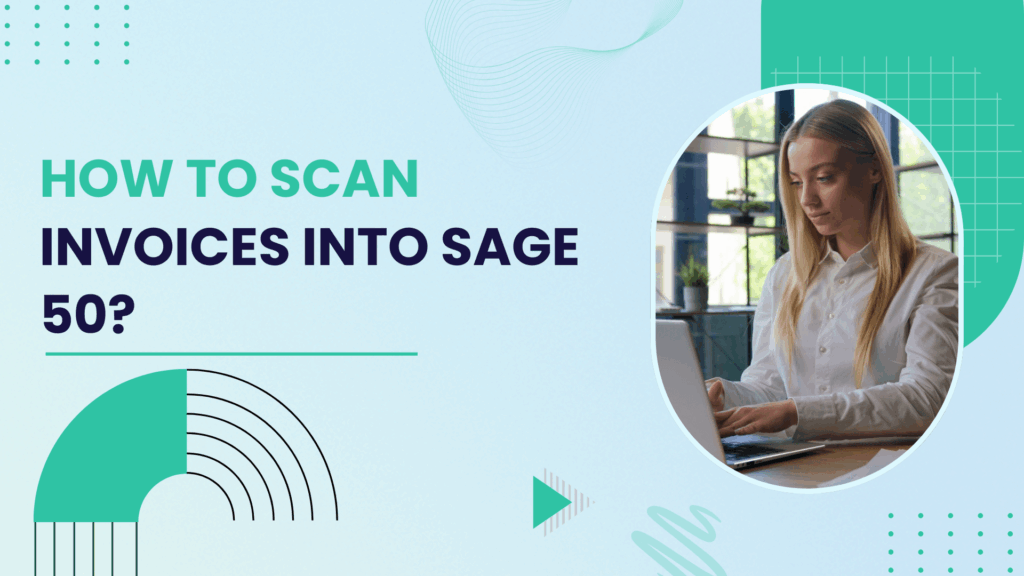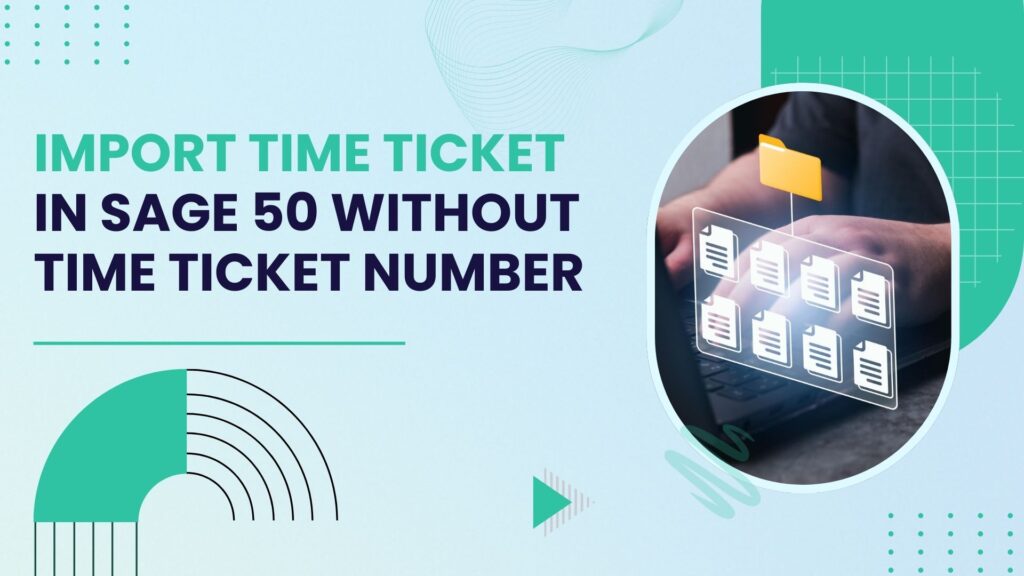In today’s fast-paced digital business environment, managing accounts payable efficiently is a top priority for finance teams. Manual data entry is not only time-consuming but also prone to errors. This is especially true when dealing with large volumes of invoices. For users of Sage 50, integrating invoice scanning technology presents a powerful opportunity to automate and streamline invoice processing. This article offers a comprehensive guide on how to scan invoices into Sage 50, the tools available, the benefits of automation, and how to implement this process effectively for your business.
Understanding Sage 50 Accounting Software
Sage 50, formerly known as Peachtree Accounting, is a robust desktop-based accounting software widely used by small to medium-sized businesses. It provides tools for managing finances, invoicing, payroll, inventory, taxes, and more. Though powerful, Sage 50 lacks built-in Optical Character Recognition (OCR) capabilities to scan and convert paper invoices directly into digital data.
To bridge this gap, businesses often integrate third-party solutions to automate invoice capture, data extraction, and posting into Sage 50.
Why Scan Invoices into Sage 50?
Scanning invoices into Sage 50 transforms a traditionally paper-heavy and error-prone process into a seamless, digital operation. Here are some key benefits:
- Increased Efficiency: Automated data entry significantly reduces time spent on manual input.
- Error Reduction: OCR (Optical Character Recognition) technology minimizes human error.
- Improved Document Management: Digital invoices are easier to store, search, and retrieve.
- Faster Payment Cycles: With quicker data entry comes quicker approvals and payments.
- Eco-Friendly: Reducing paper usage contributes to a greener office environment.
Why Automate Invoice Scanning?
Before we dive into the how-to, let’s explore the why. Automating the invoice scanning process offers several business advantages:
1. Efficiency and Speed
Manual entry of invoice data into Sage 50 can be laborious. Automation significantly reduces the time needed to process each invoice, allowing accounts payable teams to focus on higher-value tasks.
2. Accuracy
Human error is a common issue in manual data entry. OCR technology can extract invoice data with high accuracy, minimizing the risk of typos and misentries that lead to reconciliation problems.
3. Cost Savings
By reducing manual labor and processing time, companies can lower administrative costs and increase productivity per employee.
4. Better Record-Keeping
Scanned invoices are stored digitally, making it easier to retrieve, search, and audit documents without rummaging through physical files.
5. Improved Cash Flow Management
Faster processing means invoices can be approved and paid on time, possibly even capturing early payment discounts.
Tools and Software for Scanning Invoices into Sage 50
Since Sage 50 does not come with built-in scanning and OCR functionality, you’ll need to integrate third-party software to enable this workflow. Here are some popular tools:
1. AutoEntry
AutoEntry is a cloud-based data entry automation tool that integrates seamlessly with Sage 50. It allows users to upload or email invoices, which the system then reads and converts into accounting entries.
2. Receipt Bank (now Dext)
Dext helps in extracting and categorizing invoice data from photos, scans, and PDFs. It works with Sage 50 and helps automate data entry.
3. Scan2Sage
This is a purpose-built solution designed to scan documents directly into Sage 50. It supports barcoding, batch scanning, and auto-indexing.
4. PaperLess
PaperLess integrates with Sage 50 and includes full invoice management functionality, including scanning, approval workflows, and automatic matching of invoices to purchase orders.
5. ABBYY FlexiCapture
A high-end OCR solution that can be customized to integrate with Sage 50. It’s ideal for businesses with complex invoice processing requirements.
Preparing to Scan: Tools and Setup
Before diving into the scanning process, it’s essential to have the right tools and setup:
1. Scanner
- Use a high-resolution scanner (minimum 300 dpi).
- Preferably with an automatic document feeder (ADF) for bulk scanning.
2. Computer or Server with Sage 50
- Ensure your Sage 50 installation is up to date.
- Allocate enough storage for scanned documents.
3. OCR Software
- OCR software converts scanned images into readable and searchable data.
- Popular choices include Adobe Acrobat, ABBYY FineReader, or Scan2Invoice.
4. File Management System
- Organize scanned files in a structured folder hierarchy.
- Use consistent naming conventions (e.g., VendorName_InvoiceDate_InvoiceNumber.pdf).
How to Scan Invoices into Sage 50?
Let’s walk through a generalized process of scanning invoices into Sage 50 using third-party OCR software like AutoEntry or Dext. The specific steps might vary slightly depending on your chosen tool.
Step 1: Set Up the Integration
- Choose your preferred scanning/OCR tool.
- Create an account with the service provider.
- In the settings or integrations panel, link your Sage 50 company account. This often involves selecting your region and providing authorization credentials.
Step 2: Prepare Your Invoices
- Collect physical invoices or PDF versions.
- If scanning paper documents, ensure they are clean and legible. Use a high-resolution scanner (300 dpi or higher).
- Most tools accept JPEG, PNG, and PDF formats.
Step 3: Upload or Scan Invoices
- You can either scan invoices directly via a connected scanner or upload digital files manually.
- Some services allow you to email invoices to a unique address tied to your account.
Also Read: How to Import Invoices into Sage 50?
Step 4: Data Extraction and Review
- The OCR tool will process the uploaded documents and extract key information such as:
- Invoice number
- Supplier name
- Invoice date
- Due date
- Line items
- Tax and total amount
- Review the data for accuracy. Most platforms offer an easy-to-use dashboard to verify and edit extracted information.
Step 5: Categorize and Post to Sage 50
- Assign the correct expense accounts, tax codes, and supplier records.
- Once verified, post the invoice directly into Sage 50.
- Some tools also allow for multi-user approval workflows before the invoice is posted.
Step 6: Store and Search Invoices
- Invoices are archived digitally for future reference.
- Use tags, metadata, and filters to easily search for specific documents.
Common Challenges and How to Overcome Them
1. Data Misreading
OCR is not infallible. Smudged or poorly printed documents may result in inaccurate data extraction.
Solution: Always review and validate the extracted data before posting. Invest in better scanners or request digital copies directly from vendors.
2. Integration Glitches
Connecting third-party apps with Sage 50 may cause syncing issues if versions are incompatible.
Solution: Ensure both your Sage 50 and the scanning tool are up to date. Consult with support teams during setup.
3. Security Concerns
Uploading sensitive financial data to the cloud can raise data privacy issues.
Solution: Choose software providers with robust security protocols, encryption, and compliance certifications (e.g., ISO 27001, GDPR).
Best Practices for Scanning Invoices into Sage 50
- Standardize Your Invoice Format: Ask vendors to use consistent formats to improve OCR success rates.
- Regularly Train Staff: Provide training on how to scan and validate invoices properly.
- Implement Access Controls: Limit who can approve or modify invoices in the system.
- Schedule Routine Audits: Review digital invoice records periodically to ensure compliance and data accuracy.
- Leverage Batch Scanning: For large volumes, batch scanning reduces redundancy and speeds up processing.
Future Trends in Invoice Scanning and Automation
- AI-Powered Invoice Recognition: New tools use machine learning to improve OCR accuracy and auto-categorize expenses.
- Mobile Scanning: Apps are becoming more sophisticated, allowing users to snap photos of invoices on the go and sync with Sage 50.
- Blockchain Verification: Some platforms are experimenting with blockchain to verify invoice authenticity and prevent fraud.
- End-to-End AP Automation: Scanning is just the start—companies are now automating the entire accounts payable lifecycle including purchase order matching and payment scheduling.
Conclusion
Scanning invoices into Sage 50 is no longer a nice-to-have—it’s a must for businesses looking to operate more efficiently and accurately. With the right combination of OCR technology and accounting integration, you can cut costs, reduce errors, and empower your finance team with better tools and insights.
Whether you’re a small business trying to save time or a growing enterprise looking for scalability, automating invoice scanning into Sage 50 offers a clear path forward. Evaluate your current workflow, choose the right tools, and take the leap into smarter financial management today.
Frequently Asked Questions (FAQs)
Sage 50 doesn’t support direct scanning from a printer or scanner into the software. However, you can scan invoices as PDFs or images and then attach them to transactions or use third-party apps to automate data entry.
After scanning, save the invoice as a PDF or image file. In Sage 50, go to the relevant transaction (e.g., Purchase Invoice), and use the “Attach File” feature to link the scanned document for future reference or audits.
Not by default. Sage 50 lacks built-in OCR (Optical Character Recognition). However, you can integrate with software like AutoEntry, Receipt Bank (Dext), or Scan2Invoice to extract and post invoice data directly into Sage 50.
Yes! Apps like AutoEntry or Dext have mobile scanning capabilities. You can photograph invoices using your phone, and the data is extracted and uploaded to Sage 50 with minimal manual entry.
It depends on how you’re handling scanned files. Always:
1. Use encrypted storage or cloud services.
2. Restrict access to sensitive folders.
3. Use trusted third-party tools with GDPR or SOC 2 compliance when integrating.




